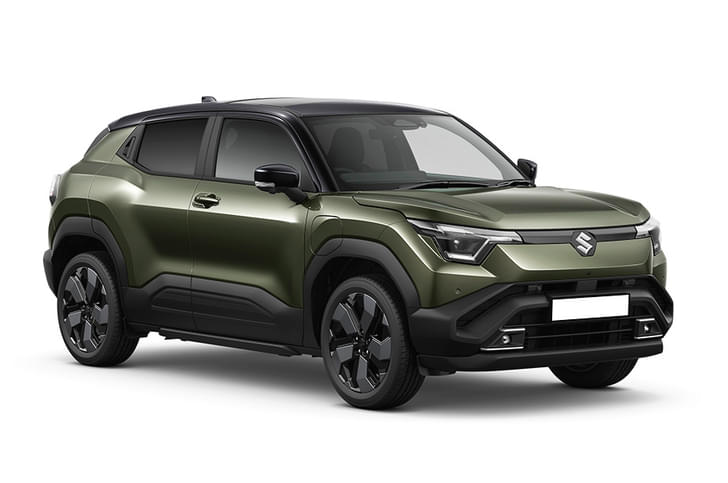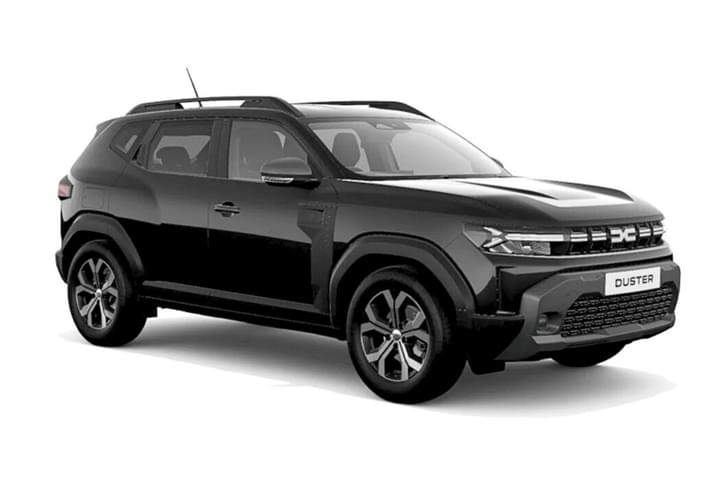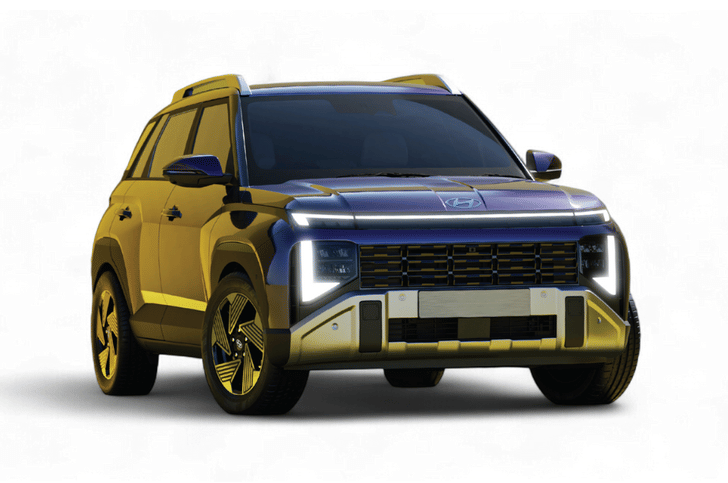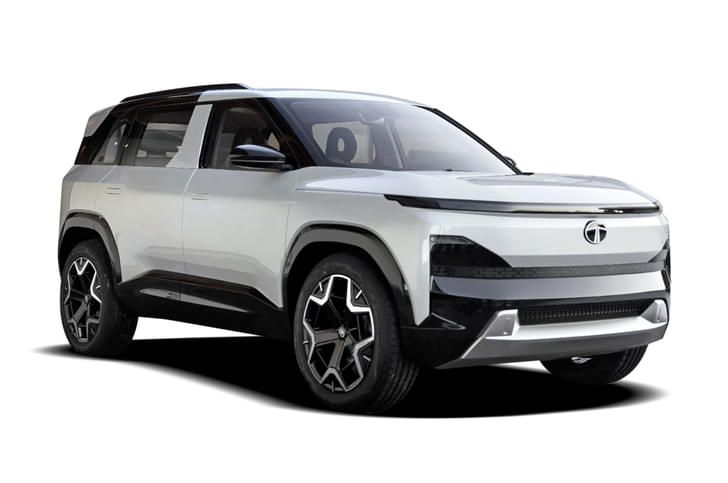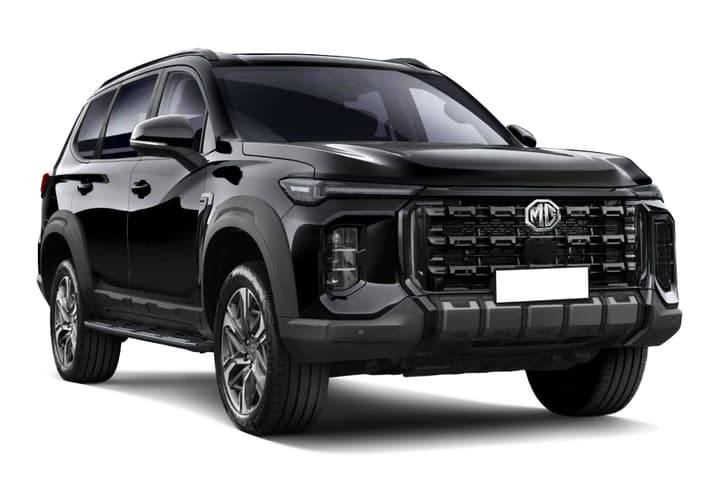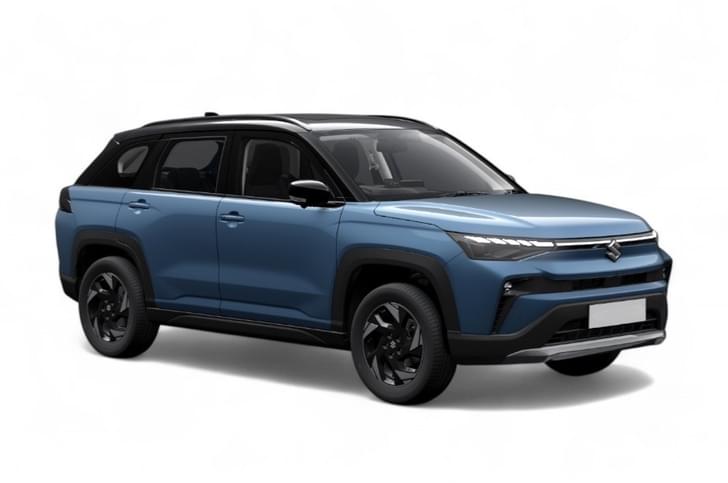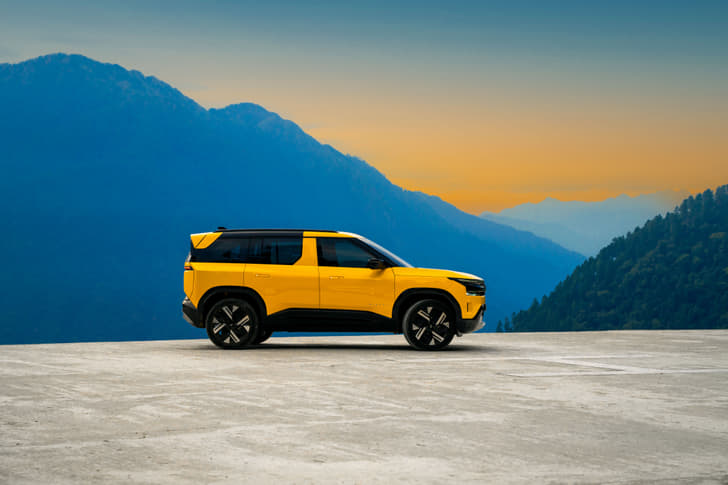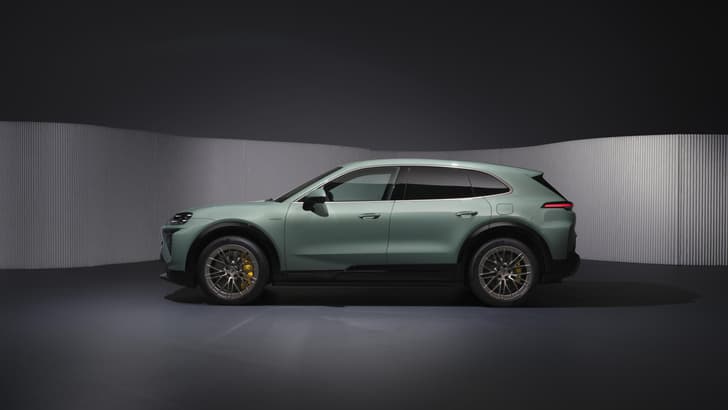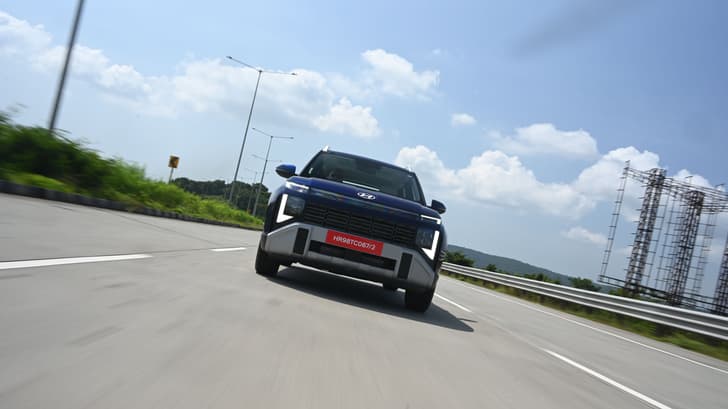It says Range Rover on the tin, so taking it off-piste shouldn’t be a problem. This, however, is not going to be easy, no sir. The path down to the river is deeply rutted, the gradient is steep, and then, what makes things more interesting is that the rounded riverbed rocks act like ball bearings under the wheels. Forget driving, walking here is fraught with difficulty.
The rough and the smooth
First things first; must get the setup right. There’s no traditional Terrain Response dial, and that foxes me for a bit. But I soon figure out how to use the neat click wheel and dial up the ‘Mud and Ruts’. Then using a spotter on the outside to check for ground clearance, I crawl forward. This version of the Evoque I’m driving doesn’t have air springs or a ‘lift’ feature, so I need to be careful not to ground it. As I move forward there are some bits where the belly gets close to the ground, but as soon as I get the ‘All clear’, the Evoque skips down the path with the confidence of a mountain goat. This is good because, despite all the rubble and loose stuff, it seems to have a vice-like grip on the ground below. And what makes driving the Evoque easier is that the throttle responses are perfectly metered. This is doubly true on the arduous climb back up, where traction and the smooth release of torque from the engine at low engine speeds are even more important. A bit more ground clearance and the baby Rangie could be mega on the rough stuff, transverse-engine, front-biased four-wheel-drive setup and all.
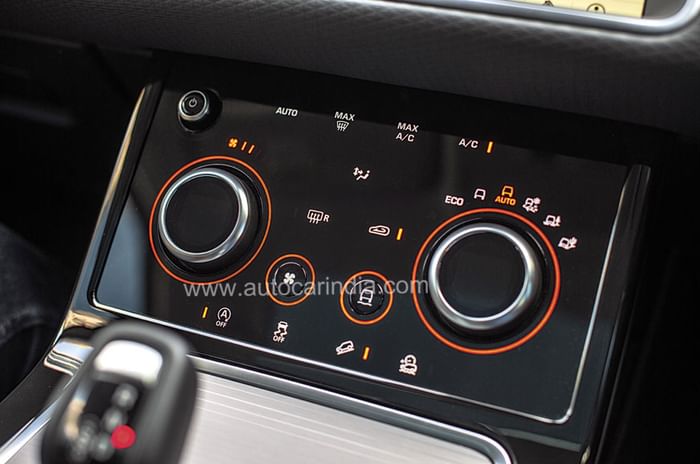
Anyway, DNA test done, it’s time to get back to the highway. The forest road that takes us there, however, isn’t in good condition. Used by overloaded trucks, ironically supplying a road-building project nearby, the surface is completely bombed out. More a collection of badly filled-in potholes and heat-warped ripples, with small patches of regular tarmac sprinkled loosely in between – it is just a nightmare. I start off slow, and this causes some small amount of vertical movement. The Evoque’s fairly stiff setup tosses us around over some of the sharp-edged bumps and there is clearly a bit of firmness detectable even over some of the patchy tarmac. However, as I go a bit faster, the ride improves considerably. The tall springs now seem to work better, the dampers round off bumps nicely, and then what impresses is that the faster I travel over this patchwork highway, the more comfortable the Evoque feels.
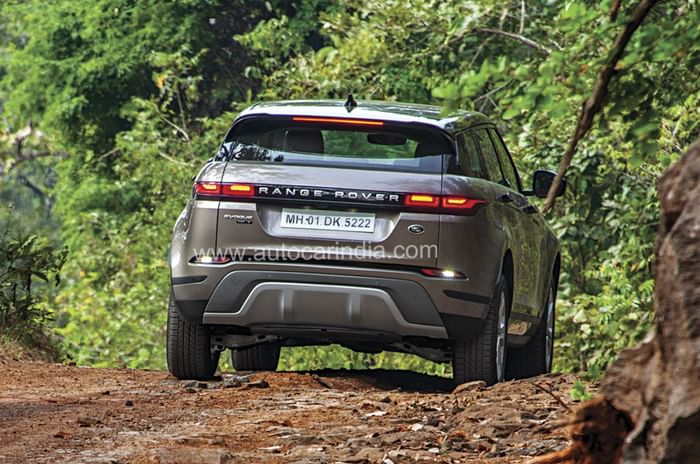
For a while it seems this patchwork road will continue forever, but then all of a sudden, we come upon a part that’s been freshly surfaced. It isn’t billiard-table smooth and carries tell-tale signs of a hastily done job, with many small dips and sudden changes in the surface. Still, what gets me excited is that the road twists, bends, dips and rises like a giant python. Now, normally, corners like these wouldn’t elicit this much excitement sat behind the wheel of an SUV, but there’s something about its demeanour that tells me that Range Rover’s baby is going to quite enjoy the challenge. Yes, the new Evoque has a roughly 20mm longer wheelbase, and that could nix some of the earlier car’s agility, but the new platform on which it is built also has a new floorpan that improves body rigidity by around 17 percent.
This is partly why body control around some of the tighter corners is good for an SUV, and every time I tweak the steering wheel, the nose goes exactly where intended. Also, what I absolutely love is how neatly and quickly it tucks in if you find yourself running a bit wide. Must say this thing is quite fun. Turn-in isn’t quite as quick as the outgoing Evoque, but in all other ways, this one has the old car well and truly licked. I especially love the relaxed confidence it radiates, and the steering is beautifully weighted and feels just right for its application here.
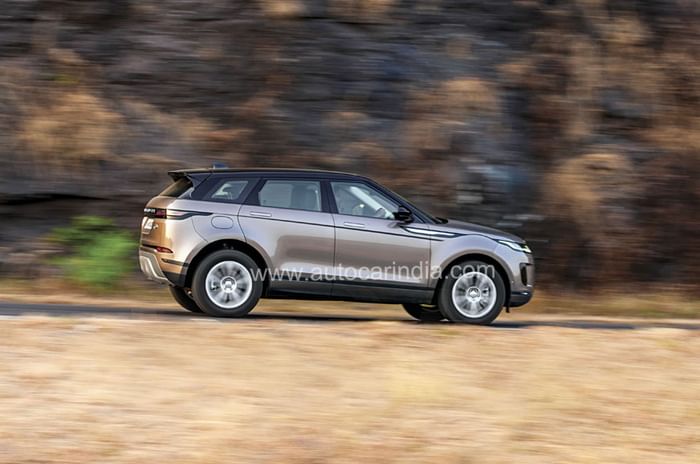
The Evoque is even super-stable at high speeds. Long stretches of highway have me only gripping the steering lightly, and all I need to do to guide it into longer and faster corners is just tip it in. Adding massively to confidence levels are the brakes. Not just a footnote here but a bedrock of stability, the brakes bleed speed effortlessly and pedal feel is strong, no matter how hard you brake.
JLR’s 180hp Ingenium diesel is also impressively smooth at idle. The cabin is well insulated from the low-speed rumble and the typical diesel clatter, and what feels great is that the motor responds well as soon as you tap the throttle. In fact, with its variable geometry turbo and faster responding 9-speed automatic, the new Evoque is reasonably quick on the draw at low speed. What also helps is that this engine makes a very useful 430Nm of torque from as low as 1,750rpm. So cross 2,000rpm and there’s a nice hit of torque, as well as a big shot of boost from the turbo. Even nicer is the fact that the engine continues to pull strongly past 3,000rpm, and this makes this BS6 diesel motor feels particularly effortless.
Flat-out performance, however, isn’t all that exciting. The engine feels a bit flat once you cross 4,000rpm and there is no big increase in performance even if you spin it faster. What makes the process feel even more futile is that the engine becomes quite vocal and drones quite a bit.
Also, ask for a quick burst of acceleration and the 9-speed gearbox doesn’t exactly comply. Yes, tuning is clearly improved compared to the earlier version, but there still is a bit of a delay between putting your foot on the accelerator and a lower gear being selected. And there’s even a bit of jerkiness as you go on and off the throttle. Overall, however, and for the most part, the Evoque in this 180d spec is smooth, responsive, stable and willing, and that feels great.
Fashion icon
The Evoque, of course, is an extremely pleasing SUV to look at. Less hardy Land Rover and more
la-di-da fashion icon, the new Evoque gets people’s attention wherever it goes. And the fact that most confuse this new one with the stunning Velar does its prospects no harm at all. Truth be told, it is difficult to tell the two apart as they share many features. Both get laid-back mesh grilles, slim-line headlights with rectangular LED inserts, headlight extensions that run onto the front doors, severely tapering rooflines and steeply rising beltlines. They even look similar from the rear with the stunning, layered LED tail-lights. So, size apart, how do you tell one for from the other, especially if all you get is a quick glance? Not that simple. . .so pay attention, 007.
The new Evoque uniquely gets an additional slot-like opening under the front grille, the bonnet line prominently runs around the big front wheel arch, and around the side, there’s a steeply sloping cut or shoulder line. And at the rear? Your best bet is to look for the badge. As with all futuristic and modern designs, wheel size is important, and here the ‘S’ gets 18-inch alloys which strike a good balance.
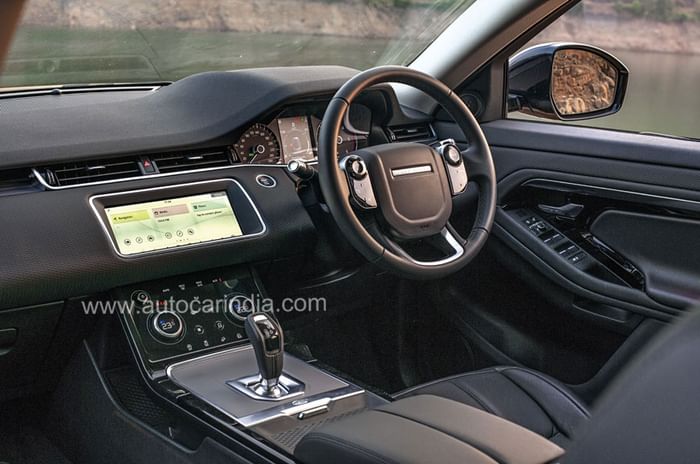
The design on the inside is equally stunning. Minimalistic in extreme, the focal point of the cabin remains the soft dash with lower and upper halves clearly defined by a channel in between. I particularly like the hooded cobra-like instrument panel cowl, the manner in which the vents have been cupped in between the two layers of the dash is super, and then there’s the neat chrome surround that runs around the touchscreen. And I also like how the feather-touch steering wheel controls can be reconfigured according to the menu you are in. While the version on test, the ‘S’, gets regular dials and only one touchscreen, the higher-spec SE version gets an additional touchscreen.
Slick operation and a high level of functionality also seem to be extremely important here. The two control wheels placed ahead of the now-traditional gear lever (no rotary dial this time around) function superbly. The dials can be used for several modes, which you can select. However, I don’t like the fact that you need to swap modes to control fan speed; it’s a pain when you are driving and want to keep your eyes on the road. Still, must say I do like the soft tray above the cupholders for your phone, and that the individual elbow rests splits down the centre, and then seat comfort on the front chairs is seriously good.
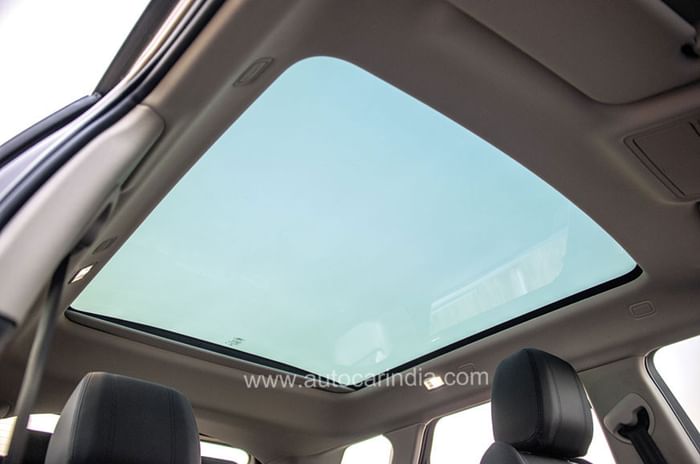
This isn’t exactly the ideal car to be chauffeured around in, still comfort levels at the rear aren’t too bad. Yes, you are seated a bit low due to the plunging roofline, and legroom is only decent. The seat though is fairly large and comfortable, the backrest is perfectly reclined, and headroom, despite the panoramic sunroof, isn’t too bad for those under 6ft. What helps here is that the sunroof is designed in such a way that it doesn’t impinge on headroom.

Seating three abreast in the back, however, isn’t a good idea. The cabin is a bit narrow and then visibility out the rear isn’t very good either due to the fat C-pillars. So, while space may be at a premium in the Evoque, it certainly is comfortable enough and feature-rich, especially if you opt for the SE version (see box), where for approximately Rs 5 lakh extra, you get a good amount of kit.
Size isn't everything
The Evoque clearly isn’t for everyone – and definitely not for those who believe size and price are directly proportional. It is a luxury SUV designed and built for a more evolved car buyer . . . someone who has been there, done that. Here compactness is a virtue, attitude, stance and style matter more than practicality, and what separates this luxury SUV from its rivals is that owners often drive themselves.

That the Evoque manages to deliver in most areas there is no doubt. Yes, ride could have been a bit more comfortable at low speed, a bit more power and performance would have been nice, and it isn’t nearly as well equipped as it should have been, considering its expected starting price of around Rs 50 lakh. Do remember, however, that the better-equipped SE version is available for not all that much more, and for those interested in more power and performance, there also will be a 249hp petrol – the P250.
Closer in price to rivals a full size up, like the BMW X3 and the Audi Q5, the new Evoque clearly isn’t a car you buy with your head; but then the Evoque has always been an emotional choice.























